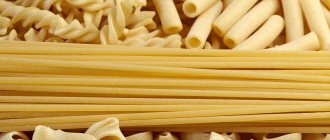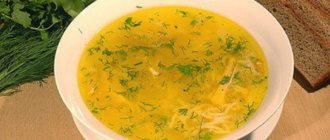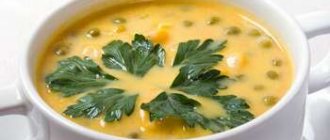Rice is a favorite product of Japanese centenarians and a healthy dietary food. Find out the calorie content of different types of rice, as well as ready-made meals, and include them in your menu without risking your waistline.
Author: Kristina Lobanovskaya, doctor, practicing nutritionist Article updated: 11/10/2020
Ask a Question
Rice is loved and appreciated all over the world. This grain is very nutritious and goes well with spicy, sour, sweet and salty foods. Therefore, both simple and exotic dishes are prepared from different varieties of rice: side dishes, soups, salads, desserts, etc. In addition, diets and fasting days on rice are popular. But, like any product, it contains calories, the consumption of which should be controlled to maintain slimness.
Beneficial features
- It contains about 80% complex carbohydrates, so it should be included in the diet of those who want to lose weight. Carbohydrates tend to accumulate in muscles and provide a long-term flow of energy into muscle tissue.
- It contains almost no salt, so it is recommended for use by people with kidney diseases and disorders of the cardiovascular system.
- Potassium contained in rice neutralizes the aggressive effects of salt, which enters the body with other foods and removes its excess. This helps remove excess fluid from the body and improve metabolism.
- Does not contain gluten, a vegetable protein that can cause a severe allergic reaction.
- It is a source of B vitamins (B1, B2, B3, B5, B6, B9), which stimulate the functioning of the nervous, cardiovascular, digestive and endocrine systems, and vitamins E, PP, H.
- Has enveloping properties. Once in the digestive system, rice gluten gently envelops the walls of the stomach and esophagus. Therefore, the product is useful for people suffering from ulcers, gastritis and high acidity.
Macro- and microelements contained in rice (per 100 g)
- Calcium (40 mg).
- Magnesium (116 mg).
- Sodium (30 mg).
- Potassium (314 mg).
- Phosphorus (328 mg).
- Chlorine (133 mg).
- Sulfur (60 mg).
- Iron (2.1 mg).
- Zinc (1.8 mg).
- Iodine (2.3 mcg).
- Copper (560 mcg).
- Manganese (3.63 mg).
- Selenium (20 mcg).
- Chromium (2.8 mcg).
- Fluoride (80 mcg).
- Molybdenum (26.7 mcg).
- Boron (224 mcg).
- Vanadium (400 mcg).
- Silicon (1240 mg).
- Cobalt (6.9 mcg).
- Aluminum (912 mcg).
- Nickel (51.6 mcg).
Energy value (per 100 g)
White. The grains undergo all stages of grinding, so they lose some of their beneficial properties (unlike unpolished grains). It is quick to prepare and most common in cooking. White rice contains 344 kcal.

Unsanded brown (brown). It is considered the most useful variety, since it is peeled only from the outer husk, preserving all the bran and nutrients. Unpolished rice removes cholesterol, stabilizes blood circulation, improves kidney function and normalizes water balance in the body. The calorie content of brown rice is 337 kcal.
Wild. It contains an almost complete list of proteins necessary for the human body (about 15 g of proteins per 100 g). Regular consumption of wild rice strengthens the muscular system, improves metabolic processes, and stimulates the functioning of the immune and digestive systems. Calorie content - 101 kcal.
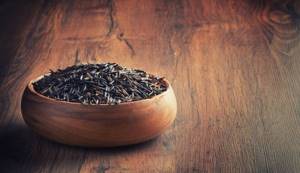
Red. It has a low glycemic index (55), which allows it to be consumed by people suffering from diabetes. Red rice contains fiber, which improves digestion, adsorbs fats, lowers cholesterol levels in the blood and stimulates intestinal motility. In addition, it contains anthocyanins, which are powerful antioxidants. They slow down the aging process and prevent the occurrence of cancerous tumors. Calorie content of red rice is 362 kcal.
Long grain. Long-grained are those varieties of cereals whose grains reach 6 mm or more in length. Due to its high fiber content, it is very beneficial for the gastrointestinal tract. The calorie content of long grain rice is 365 kcal.

Basmati. Contains fiber and amylase, which improves the functioning of the pancreas. The energy value of basmati rice is 342 kcal.
Steamed. Steaming is a technology that allows you to improve the quality characteristics of rice cereals. When steamed, vitamins and minerals from the shells are transferred to the grains, and starch is destroyed, which is why this rice becomes more crumbly. Calorie content of steamed rice is 341 kcal.

Air. Calorie content of puffed rice is 402 kcal. This is a good option for a hearty and healthy breakfast. Since puffed rice contains high amounts of fiber and protein, such a breakfast will provide a long-lasting feeling of fullness.
For sushi. You can prepare it yourself from round grain (for this you will need rice vinegar and nori seaweed), or buy ready-made. The calorie content of rice for sushi is 330-350 kcal.

Rice and diet
The low calorie content of rice has led to its frequent use in various diets. Some of them promise to get rid of 10 extra pounds in just one week.
Important! Mono-diets based on eating only one food product can harm the body. Having given preference to this method of normalizing weight, you should additionally nourish the body with multivitamins. Only a doctor will help you create a competent diet after studying your tests and health status.
Rice diet
This diet is monocomponent. The entire diet of someone losing weight consists of this grain, and there are two types of such a diet: soft and hard.
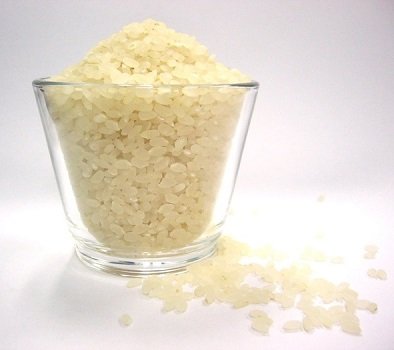
Photo source: https://appetitno.net
- When choosing a strict weight loss regimen, pour a glass of rice grain in the evening with two glasses of cold boiled water. Over the course of the morning, the rice swells and becomes soggy, resulting in something like porridge. The resulting portion of porridge should be divided into five doses and you should eat it exclusively all day. It is worth noting separately that you cannot add sugar, salt, pepper, honey and other ingredients to the porridge.
- A milder scheme involves eating rice grains for breakfast, lunch and dinner with various additives.
For breakfast, you can eat rice porridge in water with an apple, orange or grapefruit.
For lunch, boiled rice with stewed mushrooms, stewed carrots or boiled broccoli is suitable. For dinner, you can treat yourself to rice with steamed vegetables, cucumber salad or Greek yogurt. Both diets are considered quite severe, so you should not stick to them for more than five days. These options are perfect for quickly getting yourself in order before an important event, such as a wedding.
Important! When choosing a rice diet, the rate of consumption of clean water per day is at least 2 liters.
Buckwheat-rice diet
Rice and buckwheat complement each other perfectly, since both grains contain a large amount of complementary nutrients. Such a diet is much easier to tolerate than a monocomponent diet, although its effectiveness is no less.
Photo source: https://chudo-dieta.com
The buckwheat-rice diet lasts 5 days, the diet of each of which is built on the same principle:
- Breakfast – a couple of fruits;
- Lunch – rice porridge with mixed nuts;
- Afternoon snack – fresh vegetable salad;
- Dinner – boiled buckwheat with boiled chicken breast or steamed fish.
For a snack, you can eat a portion of low-fat cottage cheese without sour cream and without sugar.
Rice and honey diet
This is another strict monocomponent diet, which you should not stick to for longer than 5-7 days. This diet is less dangerous than others, as it contains honey, a storehouse of nutrients.
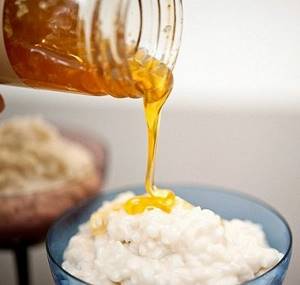
Photo source: https://www.patee.ru
Attention! The rice-honey diet is contraindicated for those who are allergic to honey and bee products.
The essence of the diet is that the entire diet consists of two elements:
- 500 grams of rice porridge, which is eaten in five meals.
- 250 ml of honey drink with lemon, which is drunk in three doses.
Other products cannot be added.
Geisha diet
When you hear the word “geisha,” your imagination immediately draws an image of a miniature, thin woman, almost transparent and immensely charming. They achieved their chiseled forms by periodically adhering to a certain diet:
- Breakfast – 0.5 liters of green tea with the addition of 50 ml of milk;
- Lunch – 250 grams of boiled brown rice with 0.5 liters of green tea;
- Dinner – 250 grams of boiled brown rice with 0.5 liters of green tea.
Photo source: https://geishaofjapan.com
Such a diet can last from three to seven days without harm to the body. During this time, not only the extra centimeters are lost, but also the skin color improves, fine wrinkles are smoothed out and your well-being improves.
Boiled
The calorie content of 100 g of raw and 100 g of cooked rice differs significantly due to the fact that during cooking the grains absorb water. Accordingly, the mass increases. Thus, 100 g of boiled white rice without additives contains only 116 calories, 100 g of boiled brown rice has a calorie content of 110 calories, 100 g of boiled unpolished rice contains 125 calories, and 100 g of boiled wild rice contains only 78 calories. As a rule, salt, butter, raisins are added to rice or boiled in milk. To calculate the calorie content of supplements, consider the amount of ingredients. If this concerns milk, pay attention to its fat content. Salt will not add calories, since its energy value is zero. But a large amount of salt can provoke fluid retention in the body and, as a result, stress on the kidneys and swelling. 100 g of butter contains 748 calories. By adding only 3 g of butter to a dish, you will increase its calorie content by 23 calories. If you like rice with raisins, remember: the calorie content of 100 g of raisins is 264 calories. 15 g of raisins will increase the calorie content of your dish by 40 calories, and 1 teaspoon of sugar - by 16. If you cook rice porridge in milk (2.5% fat) without additives, its calorie content will be 110 calories per 100 g.
How to choose the right rice
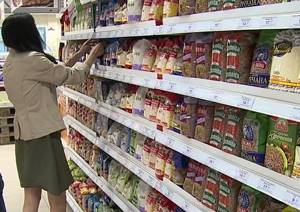
Photo source: https://orebenke.info
The health benefits and taste characteristics of rice dishes directly depend on the quality of the raw materials. The fresher the rice grain, the more beneficial it is for the body, and the more conscientious the manufacturer, the more stages of purification from impurities the product has gone through. A few simple tips will help you avoid mistakes when choosing cereals:
- Attention to packaging
First of all, the packaging must be inspected for integrity: check for signs of opening, re-sticking of the label or resoldering of the packaging seams.
Any packaging must contain information about the manufacturer and date of manufacture.
If the cereal was packaged from a large container, then the consumer packaging must contain data on the date of packaging. It’s a good sign if GOST is on the packaging.
Any packaging must be clean, not torn, without traces of dust and dirt. A careless attitude towards the container can lead to the fact that when opened, all microbes will immediately end up in the product itself and on your kitchen table.
- Looking for impurities
Be sure to shake the bag a couple of times in different planes and inspect it for impurities: grains that differ in color and size, larvae, sand, insects, dry grass, and so on. The presence of impurities of plant origin indicates the dishonesty and low culture of the manufacturer.
If you find traces of the presence of insects, larvae, etc., you should immediately refuse to purchase this product, as it may be hazardous to health. You can report such a product to the store manager or salesperson so that they can immediately remove it from the shelf.
- My years are my wealth
This phrase applies only to basmati, which, when properly stored, only becomes more aromatic and tastier, but it cannot be stored for longer than 18 months. All other varieties of rice lose their consumer properties during storage and become less healthy. Other types of cereals can be stored for 16 to 18 months, so you should carefully pay attention to the production date indicated on the product. Otherwise, it may turn out that a product purchased for future use will turn out to be unsuitable for consumption in a month.
When purchasing rice cereal, you should give preference to trusted manufacturers whose products you have already tried and were satisfied with. If you decide to purchase a new brand, do not rush and treat the whole family to this rice; it is better to first prepare a small portion for testing.
Dishes (per 100 g)
Meatballs. If you are watching your figure, choose minced chicken for making meatballs. The calorie content of meatballs with rice in tomato sauce is about 154 kcal.
Pumpkin porridge with rice. Pumpkin porridge is prepared with water or milk. If you cook it with milk, pay attention to its fat content. Thus, the calorie content of pumpkin porridge with milk (3.2% fat) with sugar is 120 kcal.

Chicken soup with rice. The energy value of this hot dish is only 90 kcal per 100 g.
Crab salad with rice. The calorie content of crab salad with rice increases if you add fatty mayonnaise to it (150-170 kcal per 100 g). If you want to make the salad less high in calories, season it with low-fat sour cream (10-15% fat content - 23-31 kcal per 20 g). The calorie content of the salad will be 135–150 kcal.
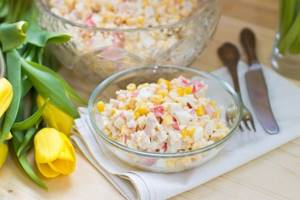
Stuffed cabbage rolls with meat. The calorie content of cabbage rolls with minced pork and beef and rice is 230 kcal.





